Select Year
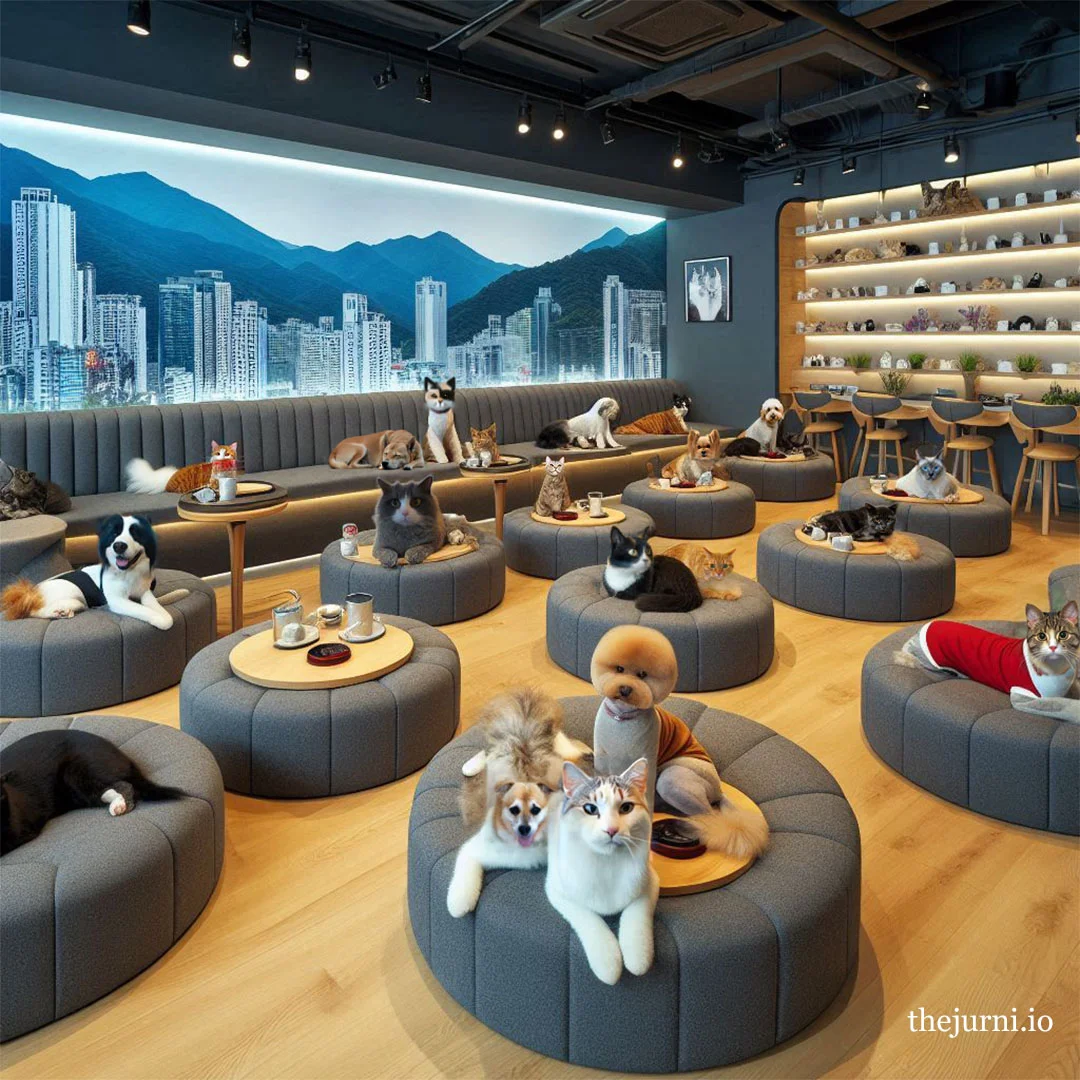
K-Pet
South Korea’s pet culture has undergone a dramatic shift. Once seen as outdoor companions, pets are now pampered family members, indulging in designer outfits, spa treatments, and gourmet meals. Social media, fueled by influencers and K-pop stars, has accelerated this trend, often turning specific breeds into overnight sensations.
Beyond its visual appeal, the pet industry in South Korea is booming. From charming cat cafés to unusual raccoon hangouts, these spaces provide city dwellers with a chance to unwind with animals amid the urban hustle. High-end pet hotels indulge four-legged guests, while luxury brands offer everything from bespoke carriers to gourmet organic treats for devoted pet owners.
The rising popularity of ‘pet-teriors’ — home designs that cater specifically to pets — highlights the significant role pets play in contemporary Korean society. With pet ownership on the rise, so is pet-related expenditure, with many individuals allocating more than 150,000 South Korean won monthly to their animal companions. This trend has spurred a flourishing pet industry, encompassing everything from high-end pet services to specialized pet products.
In a country where lifestyles are evolving rapidly, pets are fast becoming more than just companions — they’re central to how many people live, socialise, and even define their homes.

Ainu Eats
Some food cultures are instantly recognisable, while others quietly surprise you with their depth and history. Hokkaido, Japan’s northernmost prefecture, is one such place — a region where culinary traditions blend Indigenous Ainu practices with unexpected Western influences, creating a food culture unlike anywhere else in Japan.
Tim Anderson’s new book, Hokkaido, dives deep into this fascinating food landscape, revealing how the region’s volcanic soil and snowy winters have shaped not only its ingredients but also its entire food philosophy. Hokkaido’s famous kombu (sea vegetable) owes its depth of flavour to the mineral-rich waters surrounding the island, while its seafood — crab, scallop, salmon — rivals the best in Japan. Wheat plays a starring role too, making Hokkaido’s ramen heartier and its confections richer, from milk butter ice cream to airy cheesecakes.
Ainu cuisine is rooted in a deep respect for nature, where ingredients are seen as gifts from kamuy (spirit deities), and even foraging follows rituals of gratitude. Today, a renewed interest in Ainu food is emerging, with new restaurants and cooking classes at the National Ainu Museum bringing these traditions to a wider audience.
With its blend of Indigenous wisdom, international influences, and a natural bounty unlike anywhere else in Japan, Hokkaido’s food scene is finally stepping into the spotlight.
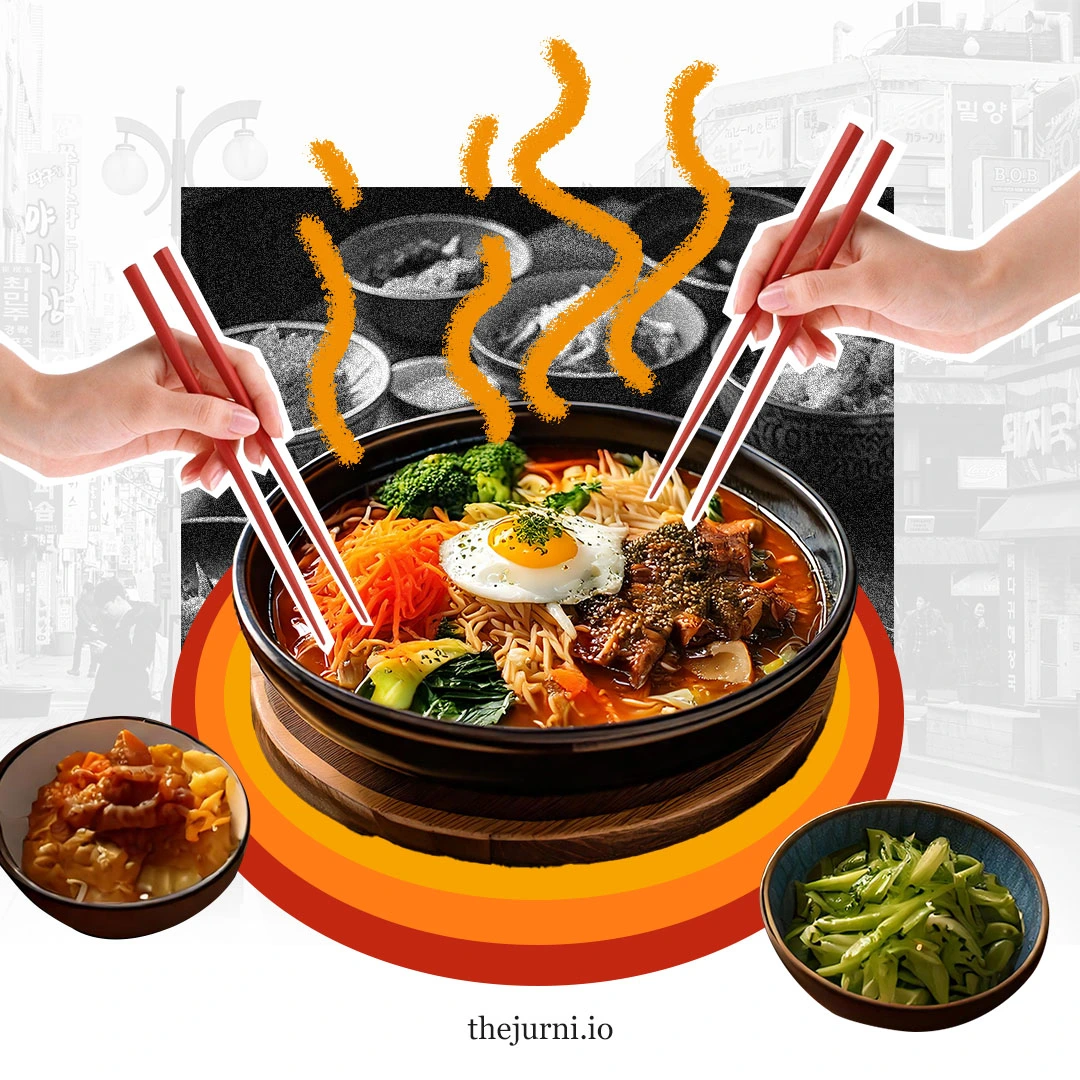
Viral Bites
Social media has turned food into a spectacle, a performance where the most dramatic, eye-catching dishes take centre stage. We’ve been eating with our eyes first, and Korean food? It’s built for the spotlight. Think of the hypnotic sizzle of samgyeopsal (meat) on a hot grill, the thick, glistening sauce of tteokbokki (rice cakes) bubbling away, or the cheese pull so mesmerizingly long it defies physics.
But it’s not just about aesthetics. Korean food thrives online because it taps into something deeper — the culture of communal eating. Mukbang, where hosts eat mountains of food while chatting with millions of viewers, was born from Korea’s dining culture, where meals are meant to be social. Even convenience store food in Korea carries a sense of play — mixing instant noodles with cheese, stacking up flavoured milks, customising dosirak lunchboxes. It all encourages interaction, and interactive food makes for viral content.
Then there’s the Hallyu (Korean Wave) effect. K-dramas weave food into their storytelling — a simple bowl of ramyeon becomes a charged moment of romance. Street food scenes become love letters to late-night cravings.
Korean cuisine has mastered the art of making people want in. It’s spicy but sweet, comforting yet adventurous, familiar yet new — just like the content we consume daily. So if you’ve ever found yourself hypnotised by someone dunking fried chicken into spicy sauce, congratulations. You’re part of the story now. And the algorithm? It knows you’re coming back for more.
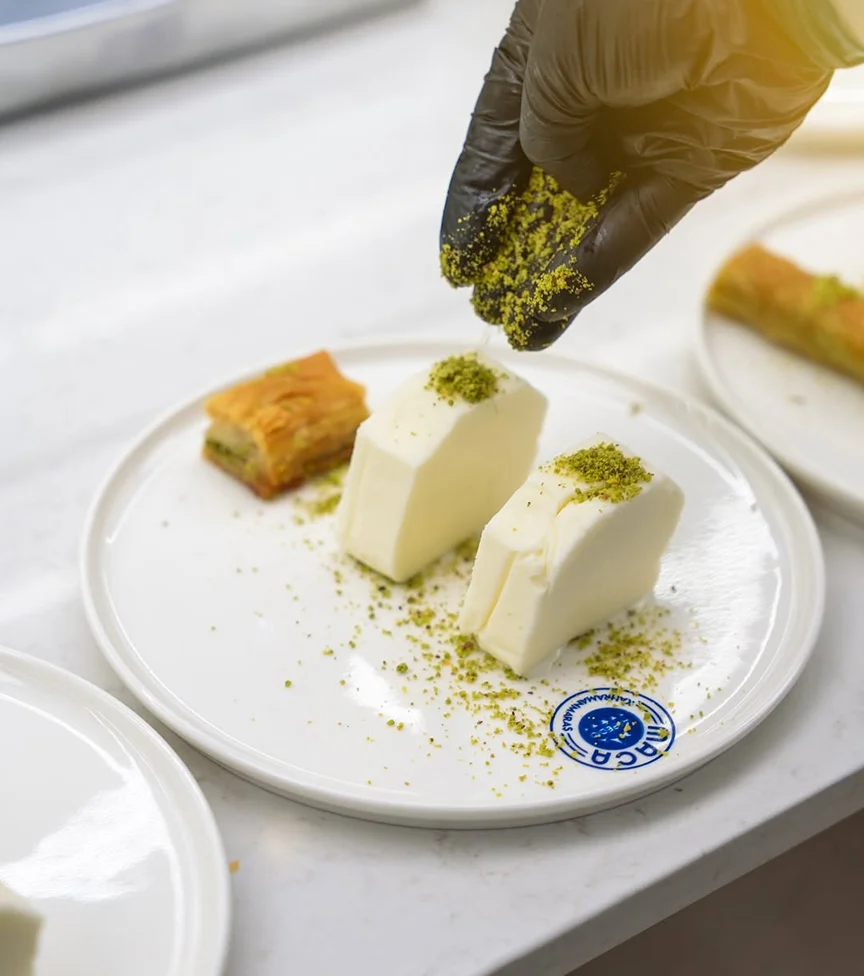
Turkish Delight
Dondurma is a real cultural treasure all the way from Türkiye that you can try as early as today. This condensed, stretchy, and resistant dessert is the only ice cream in the whole world that should be eaten with a knife and fork. Its texture, unlike any other frozen dessert, is obtained after careful processing, which also includes drying salep (orchids grown for their root tubers) for a year long in the mountainous region of Maraş.
In Istanbul, you can see dondurma masters with many years of experience around many corners. They cut big slices off cylindrical slabs and dust them with pistachio powder before serving it.
The original ingredients of the recipe call for goat’s milk, salep, and beet sugar. And you can actually make dondurma at home. If you can’t find salep, you can also replace it with corn starch. Mix your ingredients well and cook them until thickened, then cool. The trick is constant stirring to give it that right texture. After thickening, freeze the mixture and that’s all, you’re done!

Baggage Claim
Not long ago, luggage was merely a practical necessity — something to haul your stuff from point A to B. But now, it has become a part of the outfit, a travel essential that says as much about you as your destination does. Take the Indian brand Uppercase, for example, which just landed at New York Fashion Week (NYFW) last week, making it clear: suitcases aren’t just rolling behind you anymore — they’re making a statement.
This moment is about more than one brand’s success — it’s part of a broader transformation in how we approach travel. Luggage is no longer just about function; it’s an extension of identity. High-design suitcases, like those from Mokobara, have redefined travel aesthetics, blending sleek looks with smart features. Meanwhile, AI-powered suitcases are making their way into the mainstream, adding tech-driven convenience to the mix. Even luxury giants like LVMH are investing in high-end luggage, solidifying its status as a fashion essential. Uppercase’s debut at NYFW is just the latest sign that travel gear isn’t an afterthought — it’s an integral part of the way we move through the world.
Why does this matter now? Because travel itself has changed. With more people embracing slow travel, remote work, and immersive experiences, luggage is about adaptability, identity, and even aspiration. Whether it’s sleek, minimalist designs or bold, statement-making colours, what we carry reflects how we move through the world. The suitcase has evolved from a forgettable necessity to a key player in the modern travel experience — one that’s just as thoughtfully curated as the journey itself.
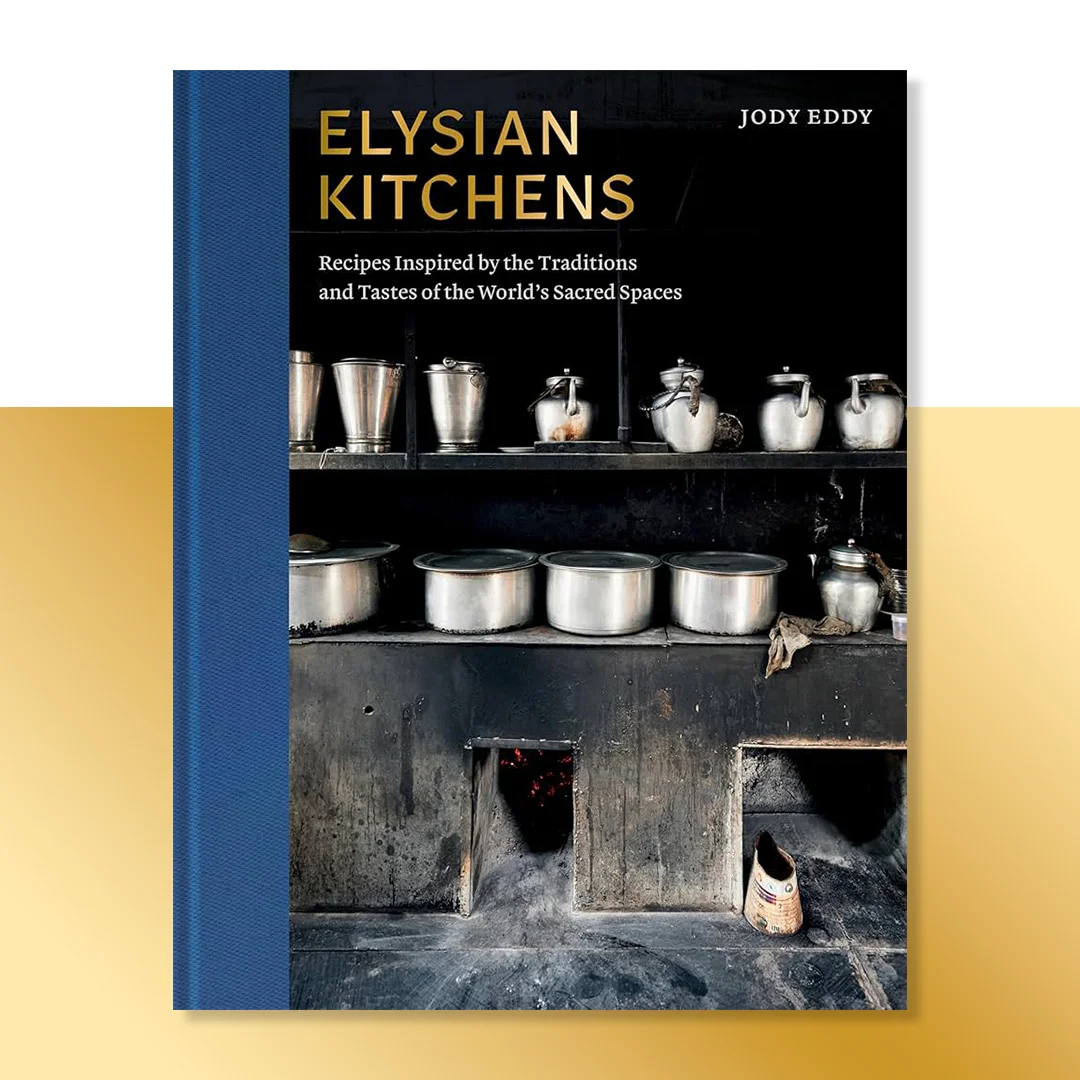
Hearth and Heritage
In the hush of a pre-dawn kitchen, steam rises from a pot of simmering rice, curling like incense into the rafters. A monk moves with quiet precision, slicing vegetables, pressing tofu, stirring a fragrant broth — every motion deliberate, every meal an act of devotion. Across the world, in a high-altitude monastery in Ladakh, another kitchen hums to life where dough is shaped into thumbprint-sized noodles and dropped into a bubbling stew thick with root vegetables.Thousands of kilometres away, in a Gurdwara in Delhi, vast tavas sizzle as golden chapatis puff over open flames, ready to be served to anyone who walks through the doors, no questions asked.
Food has always been a universal language — a bridge between cultures, traditions, and beliefs. Food writer Jody Eddy has captured this essence in her book, Elysian Kitchens – Recipes Inspired by the Traditions and Tastes of the World’s Sacred Spaces.
From a Sufi kitchen in Morocco to a Benedictine abbey in France, each sacred space carries a unique culinary tradition, bound by the same principle — food as an offering, an expression of gratitude, and a way of bringing people together.
The book is a love letter to these culinary traditions. Each recipe reminds us that food, at its heart, is a shared language — one that speaks of warmth, generosity, and the quiet magic of a meal prepared with care.
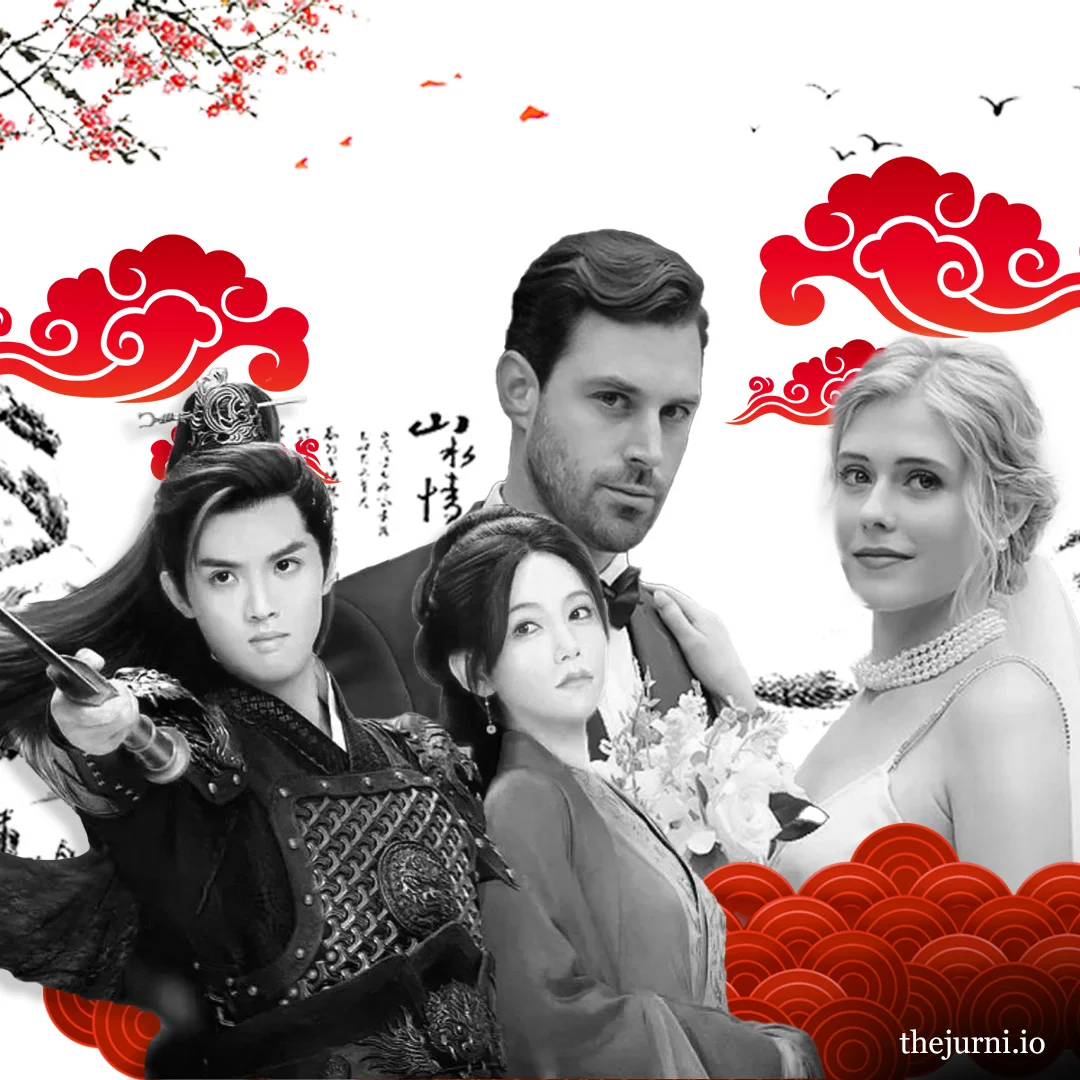
Sixty-Second Sagas
We’ve all been there — bingeing a favourite show for days, only to be left heartbroken (and existentially lost) when the season finale hits, and the next instalment is a year away — if it even happens. Not for C-Drama (Chinese Drama) fans, though. While K-Dramas, like most series, often run for an hour per episode, China’s latest obsession flips the script. With episodes just 60 to 90 seconds long, these micro-dramas pack entire sagas into bite-sized bursts, often spanning 50+ episodes.
Packed with romance, revenge, and plot twists that could make even Shakespeare dizzy, these mini-dramas are fueling China’s booming short-form industry — where high-intensity storytelling plays out in the time it takes to reheat your tea. With short-form content dominating social media, these lightning-fast C-dramas are now making their way to the world.
While traditional C-dramas are known for their sprawling epics, the rise of short-form platforms like Douyin and Kuaishou has given birth to ultra-compact series designed for the scrolling generation. No slogging through slow episodes, no waiting years for a new season — just fast, addictive storytelling that keeps you coming back for more.
Why is this working? Attention spans are shrinking, and instant gratification is king. Why commit to a 12-hour binge when you can get your dramatic fix in mere minutes? Gone are the days of waiting years for a beloved show to return.
As these micro-stories cross borders, don’t be surprised if your next guilty pleasure fits neatly between two bus stops. The age of the 60-second episode is here — and it’s moving fast.

Maltese Marvels
Of all the beautiful islands that dot the Mediterranean Sea, Malta has to be among the most beautiful and enthralling ones. This island nation is known for its pretty beaches, natural harbours, and its beautiful architecture, which combines features of several different traditions. However, it is Malta’s early history that is the most fascinating and enigmatic.
The island has been inhabited since the sixth millennium BCE, which makes it among the earliest places of habitation in all of Europe. Interestingly, the first people to move there were not sailors or traders, but farmers. And after much of the island had been over-farmed, it was deserted for over a millennia, after which the first settlers to the island arrived. And the evidence for this prehistoric culture is something that will make your jaws drop.
The second wave of Malta’s settlers arrived from Sicily, and created some of the grandest megalithic temples known. The Ġgantija temple complex has the oldest free-standing building in the world, and was built in 3600 BCE. Subsequent temples, as well as a few much older ones, are dotted all over the island, and are a testament to the sustained occupation of the islands, which is very unusual for pre-Bronze Age Europe.
More than just the imposing size of the structures are the designs and the beautiful sculptures that have been found here. The temples have curved arches and differently sized rooms, and from above, they give the appearance of a human body, which corresponds with the art found here. In case you wish to get a dose of life in early Europe along with some amazing views, Malta may just be the place for you.
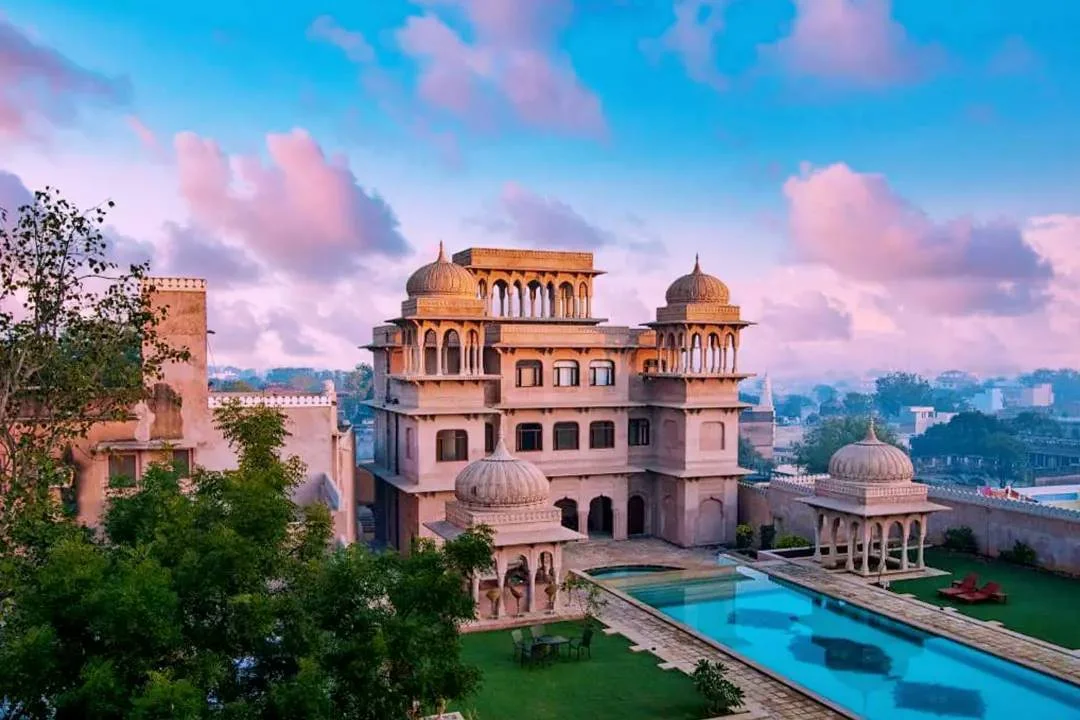
Oh, Man(dawa)
In the heart of Rajasthan, where the desert wind whispers through ochre streets, the town of Mandawa is quietly reclaiming its past. Once a thriving stop on a historic trade route, its grand havelis — mansions adorned with intricate frescoes — had fallen into neglect. But today, a revival is underway.
Local artists and restorers are uncovering centuries-old frescoes that depict tales of Rajput kings, Mughal artistry, and even colonial quirks — an Englishman with a telephone, a steam train rendered in striking pinks and reds. Some havelis, like the Gulab Rai Ladia Haveli, are being meticulously transformed into boutique hotels, offering a window into Shekhawati’s storied past. Others remain untouched, their weathered murals whispering echoes of a once-glorious era.
Mandawa’s slow-blooming renaissance is drawing those who seek culture beyond Rajasthan’s well-trodden routes. With each brushstroke and restoration project, the town is preserving its legacy while inviting the world to rediscover it.

(Pine)apple A Day
Who would’ve thought pineapple leaves could shape the future of design? In the Philippines, what was once agricultural waste is now pinyapel — a sustainable material turning up in everything from wall panels to lighting fixtures. Pinyapel, a material crafted from repurposed pineapple fibres, is redefining eco-conscious interiors with its natural texture and refined aesthetic.
The journey of pinyapel begins with locally-sourced pineapple leaves, carefully dried, pulped, and pressed into durable sheets. The result is a unique, textured material that seamlessly blends sustainability with style. Its neutral tones and natural fibres allow it to complement a wide range of designs, from minimalist to rustic.
Beyond wall panels and furniture, the material is also making its way into everyday living spaces in creative ways. It is used in lighting design, where its organic texture diffuses light beautifully, creating a warm, natural ambiance. On the other hand, some designers are experimenting with it in cabinetry and decorative partitions, offering a sustainable alternative to wood. In commercial spaces, it is finding its place in eco-friendly packaging, artisanal paper products, and even biodegradable coffee cups, reinforcing its practicality beyond interiors.
As artisans and designers continue to explore its versatility, pinyapel is becoming a statement. By transforming agricultural byproducts into purposeful design, it showcases the potential of natural resources, turning something once overlooked into something truly extraordinary.

Sweet Everythings
In the high-altitude kitchens of Tibet, a sweet aroma fills the air as families prepare for Losar, the Tibetan New Year. At the heart of the celebration is khapse, a deep-fried dessert pastry that is a symbol of peace, prosperity, and the passing of time.
Traditionally shaped into intricate patterns, from simple twists to elaborate knots, khapse carries deep cultural significance. The crisp golden pastries are often arranged as offerings on altars, shared with loved ones, and even gifted to neighbours as a gesture of goodwill. For many Tibetans, making khapse is a communal affair, bringing generations together in the kitchen, reinforcing the bonds of family and tradition.
But khapse is not just confined to Tibetan homes. Across Himalayan communities, from Ladakh to Bhutan, the pastry has taken on regional variations, yet its essence remains unchanged — celebrating renewal and togetherness. Even among Tibetans elsewhere, the ritual of making khapse preserves a link to home, a reminder that food is as much about memory as it is about celebration.
Khapse stands as a quiet and powerful tradition, offering a taste of history with every crunch.

Gaming Beyond Generations
Video games have long been seen as the domain of the young, but a quiet revolution is underway — one that is reshaping how we think about play. From retirees learning to code to seniors finding unexpected joy in mobile games, older gamers are stepping into the spotlight.
Take Masako Wakamiya, an 81-year-old Japanese programmer who created a video game specifically for seniors. Her journey from coding newbie to game producer demonstrates the growing need for digital experiences tailored to older players. Gaming has benefits beyond amusement; it can improve cognitive abilities, lessen loneliness, and foster relationships between generations.
Big tech is also paying attention. Companies like Tencent are investing in accessibility, while mainstream game studios are recognising the spending power of older players. As a result, gaming is quietly weaving itself into family traditions, with video games replacing board games as a new way for generations to bond.
The stereotype of the teenage gamer is fading, making room for a broader, more inclusive gaming culture. Whether it’s word puzzles on a smartphone or RPGs on a console, one thing is clear: gaming is for everyone.

From Ragas to the Grammys
Every year, the Grammys set the stage for musical legends, viral moments, and cultural conversations. This year was no different. Amid mainstream wins and historic moments, a quieter, yet equally significant, victory was unfolding. Indian and Indian-origin artists carved out a space in the global music scene, not just as nominees but as winners too, bringing a powerful presence to the awards.
Indian-American vocalist Chandrika Tandon took home the Grammy for Best New Age, Ambient, or Chant Album with Triveni, a hypnotic blend of ancient mantras, flute, and cello. Tracks like Pathway to Light, Journey Within, and Aether’s Serenade create a meditative pull, each adding to the album’s immersive soundscape. Tandon shared the honour with South African flautist Wouter Kellerman and Japanese cellist Eru Matsumoto, cementing Triveni as a testament to cross-cultural collaboration. In a category featuring strong contenders like Ricky Kej, Anoushka Shankar, and Radhika Vekaria, her win underscored the deep global resonance of Indian spiritual and classical influences.
Indian artists have long been part of Grammy history, from Ravi Shankar to AR Rahman, but their growing presence in recent years signals a shift. No longer confined to niche recognition, Indian music is now shaping global soundscapes and earning its place in the mainstream. Bollywood and indie Indian music have commanded massive domestic followings for years, but moments like these push their music further onto the world stage, breaking barriers and cementing their influence in global playlists.

Carnival Crossroads
Mardi Gras is a spectacle of music, revelry, and elaborate costumes, best known for its dazzling parades in New Orleans in the US. Rooted in the French Catholic tradition of feasting before Lent, the festival has evolved into a vibrant celebration, attracting large crowds to Louisiana each year.
But Mardi Gras is far from just an American affair. Across the Atlantic, Venice hosts its own iconic version — Carnevale — where masked figures glide through misty canals, keeping alive a centuries-old tradition. In Cologne, Germany, Karneval takes over the streets with costumed revellers and sharp political satire, turning the city into a stage for colourful pageantry.
Further east, the Balkans add their own dramatic twist to the celebration. In Croatia, Montenegro, and Albania, Carnival takes on a raucous, theatrical form, where giant effigies — often representing social or political messages — are paraded and burned in symbolic purges. Coastal towns like Kotor and Rijeka come alive with masked balls, folk performances, and exuberant processions, blending ancient Slavic customs with Mediterranean influences.

Urban Harvest
In some cities, one in four office spaces now sit empty — but some are being transformed into thriving indoor farms. With urban spaces growing more congested and the demand for local food rising, cities worldwide are turning to vertical farming. From repurposed office buildings to compact hydroponic setups in homes, controlled-environment agriculture is redefining how and where we grow our food.
In cities like Calgary, Tokyo, and Singapore, office buildings are being transformed into lush indoor farms, growing crops like kale, cucumbers, and strawberries. Farms use methods like hydroponics, aquaponics, or aeroponics — soil-free systems that nourish plants with nutrient-rich water or air.
In Mumbai, where outdoor space is a luxury, hydroponic farming is evolving to meet the city’'s unique needs. Local startups are developing compact, self-watering systems designed for high-rise living, while community-led initiatives are helping residents share small-scale farms on apartment terraces. Unlike traditional terrace gardens, these systems thrive even in Mumbai’s humid climate, making fresh produce more accessible in one of the world’s most crowded cities.
The design of indoor farms is as creative as it is functional. Many of these farms use modular racks or vertical towers, created to fit into spaces that would otherwise be underutilized. Climate-controlled environments, artificial lighting, and automated irrigation systems ensure that crops grow efficiently year-round.

Brewed Beats
If you've seen DJs dropping beats in coffee bars or open kitchens, you've caught a glimpse of the coffee rave phenomenon. Ditch the chaos of club nights — these intimate, alcohol-free gatherings are reshaping nightlife, centering on music, atmosphere, and, naturally, coffee.
What started in Amsterdam, London, and New York has now brewed its way into Indian cities. DJs like Tanishq are leading the charge with his More Coffee More Rave tour, turning coffee counters into DJ booths, with his recent performance at Mokai in Mumbai. His first coffee rave in Nagpur even had the café staff handing him coffee shots mid-set!
Cafés like Corridor Seven in Nagpur and Pulp Café in Surat have also embraced this trend, hosting gigs by renowned names like Nikhil Chinappa and local talents like DJ Sindhi Curry. Hidden Elements, an entertainment company, even promoted a surprise rave in Nagpur that drew 400 people in just hours of planning. These events cater to a diverse crowd — Gen Z, introverts, non-drinkers — offering a safe, inclusive space to enjoy underground music.
But why this shift? The post-pandemic crowd craves meaningful, close-knit experiences. Coffee shops, with their cozy charm, are perfect for this. Plus, they allow smaller artists to shine, offering opportunities where nightclubs fall short. With social media fueling the FOMO, these events are gaining traction, appealing to the sober-curious movement and a generation that doesn’t need alcohol to dance.
Coffee raves are redefining nightlife — proving that all you really need to dance is the right vibe (and maybe a double espresso). Would you trade the club for a coffee rave?

Sole Survivors
Growing up, you probably remember how your parents always seemed to have a secret rolodex of cobblers, tailors, and repair kits at the ready. When shoes wore out, instead of tossing them out for a flashy new pair, they’d take them to the cobbler for a quick fix. The thought of wasting anything — be it shoes, buttons, or even that worn-out jacket — was unimaginable.
But a growing movement is pushing back — enter the repair revolution. People are rediscovering the joys of mending, reusing, and revitalizing what they already own. There's a shift towards sustainability, where the mantra is: “Fix it, don’t ditch it.” Why? The environmental crisis has made people rethink their habits. Landfills are overflowing, and resources are finite. Repairing what you own is empowering. From cobblers reviving old leather to DIY enthusiasts sharing mending tutorials online, this movement is a cultural shift towards valuing craftsmanship and durability.
Embracing repair is a stand against waste and a nod to traditions that prized utility over excess. In an era of endless consumerism, maybe it’s time we all take a page from our parents’ playbook and embrace the fine art of repair— after all, some things are worth saving.

Code and Cupid
In a world where swipes dictate sparks and algorithms decide compatibility, love has embraced the digital age — and AI is leading the charge. From crafting the perfect pickup line to analysing relationship dynamics, artificial intelligence has transformed modern romance in a lot of ways.
AI-powered dating apps now promise more than just a match; they boast compatibility scores, personality assessments, and even tips to ace your first date. Virtual partners, like AI chatbots, offer companionship to those craving connection. Culturally, the implications are profound. AI is challenging traditional ideas of intimacy, introducing new forms of connection that defy societal norms. But it also raises questions: Can a machine truly understand human emotions? Is relying on AI stripping away the authenticity of love?
While some celebrate the convenience and inclusivity AI brings to relationships, others worry about the loss of spontaneity and depth. Whether you’re a skeptic or a tech enthusiast, one thing’s clear — love is no longer just a matter of the heart; it’s also a matter of code.
Would you trust an algorithm with your love life?
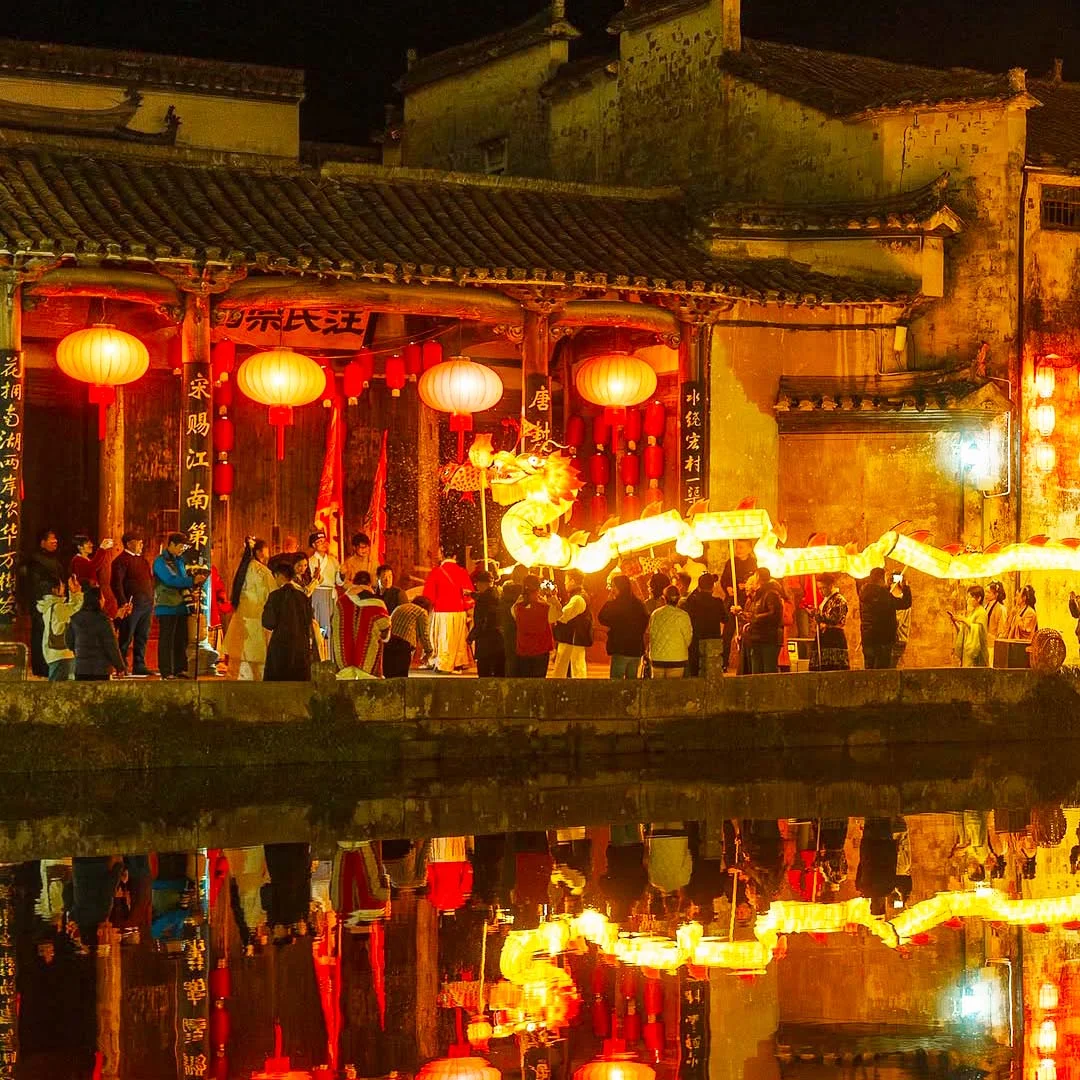
Dragon Dance
Picture this: the rhythmic beat of drums echoes through narrow streets as a lion dance troupe weaves gracefully amidst a cheering crowd, their movements a symphony of tradition and energy. This is the Chinese New Year celebration, slated to take place today. And those who observe the festival around the world celebrate with fervour.
In San Francisco, for example, the iconic 28-foot Golden Dragon winds its way past illuminated floats, under a sky bursting with fireworks, heralding the start of the year. The celebrations there embody the grandeur of this festival, drawing thousands into its vibrant fold.
Across the Pacific, Sydney’s Opera House glows a radiant red, anchoring the city’s Lunar Lantern Walk — a striking fusion of art and heritage. The soft glow of lanterns reflects off the harbour, inviting you to stroll among intricate displays that pay homage to tradition. Further afield in Malaysia, lion dances captivate diverse audiences, symbolising unity and prosperity.
Meanwhile, in the Philippines, the cherished tradition of gifting tikoy — a sticky rice cake — embodies good fortune. Families come together to share meals that blend Chinese roots with Filipino warmth. Even on the island of Mauritius, many light firecrackers and share wax cakes, echoing traditions while weaving them into the island’s unique cultural fabric.
Through these globally diverse traditions, Chinese New Year transcends borders, adapting to local contexts while preserving its essence. Each variation honours its roots while fostering cultural exchange, uniting communities worldwide in a shared celebration of renewal and hope.
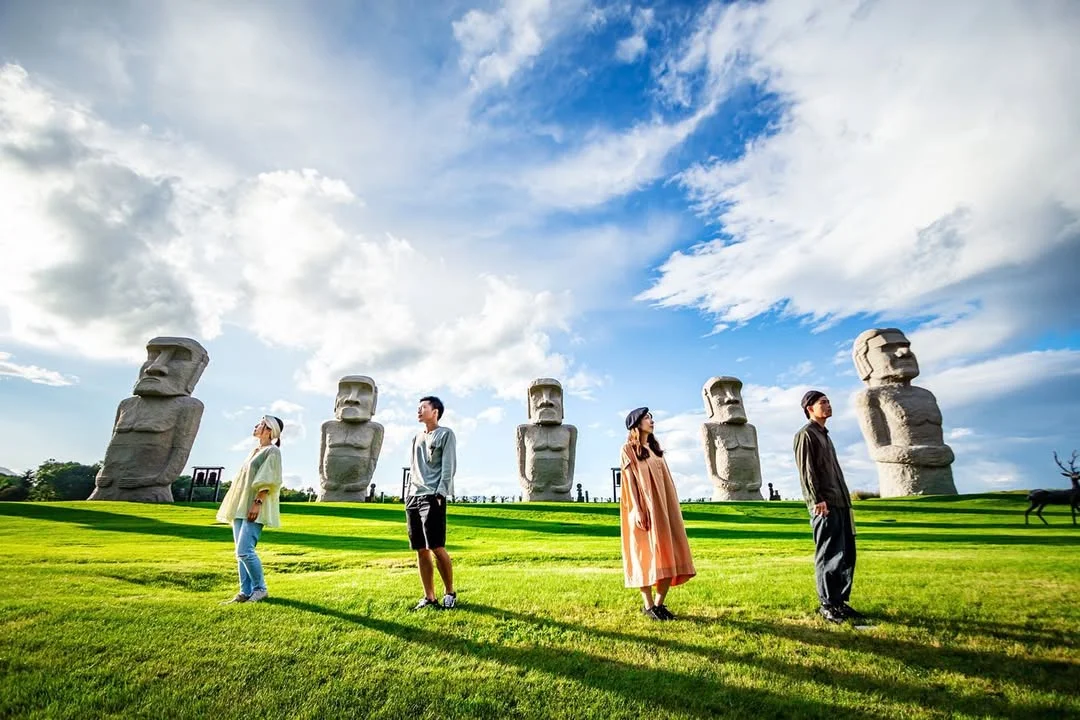
Japan’s Tight-Knit Communities
Okinawa, Japan, often celebrated as one of the world’s Blue Zones, is home to the longest-living people, and much of their longevity can be attributed to moai — a tradition where groups form lifelong support systems. These tight-knit communities, established in childhood, provide emotional and practical assistance, meeting regularly to share experiences, challenges, and victories.
A sense of purpose and belonging, which are essential for preserving wellbeing, are fostered by Moai. The practice has developed over time, assisting Okinawans in overcoming feelings of isolation, lowering stress levels, and promoting healthy lifestyle choices including regular exercise and a balanced diet. The support network serves as an essential safety net, providing both practical assistance and emotional solace when required.
In a world where social isolation is increasingly common, Okinawa’s focus on moai serves as a reminder of the power of human connection. This deeply ingrained tradition highlights the importance of building and maintaining strong relationships, which ultimately contribute to not just a long life, but a healthier and happier one.

Global Stage
Remember the days when catching your favorite artist meant a pricey international flight and a weekend spent in another country? Well, not anymore. As global music icons like Ed Sheeran, Shawn Mendes, and even Dua Lipa start to make their way to India, the country’s once-neglected concert scene seems to suddenly be a hotbed for international talent. Which is, perhaps, why Coldplay’s long-awaited return is more than just a milestone for fans — it’s a reflection of the country’s growing influence on the music world.
But why now? A key reason is the rise of a youth-driven music culture in India that’s capturing global attention. With the country’s music industry projected to grow to 37 billion rupees as soon as next year, it’s no wonder international artists are taking notice.
The spotlight isn’t just on the global headliners — this is also a transformative moment for India’s homegrown talent. Artists like Anoushka Maskey, Frizzell D’Souza, and Hanumankind are breaking boundaries, gaining recognition both locally and on international platforms. With opportunities to collaborate and open for global icons, Indian musicians are carving out a space for their unique sounds in the global music scene.
This week, Coldplay’s Mumbai concert was nothing short of historic. The band’s energy was contagious, but what made it even more memorable was the surprise inclusion of Indian artists Jasleen Royal, who opened the show. The soulful performance set the perfect tone for the night, bridging the gap between global and local talent, and marking a thrilling moment of cross-cultural collaboration.
The blend of international acts recognizing India’s cultural significance and local artists stepping into the spotlight signals a new era for music in the country. As the curtains fall on nights like Coldplay’s electrifying performance, one thing is clear: India is no longer just listening — it’s leading the global music conversation.
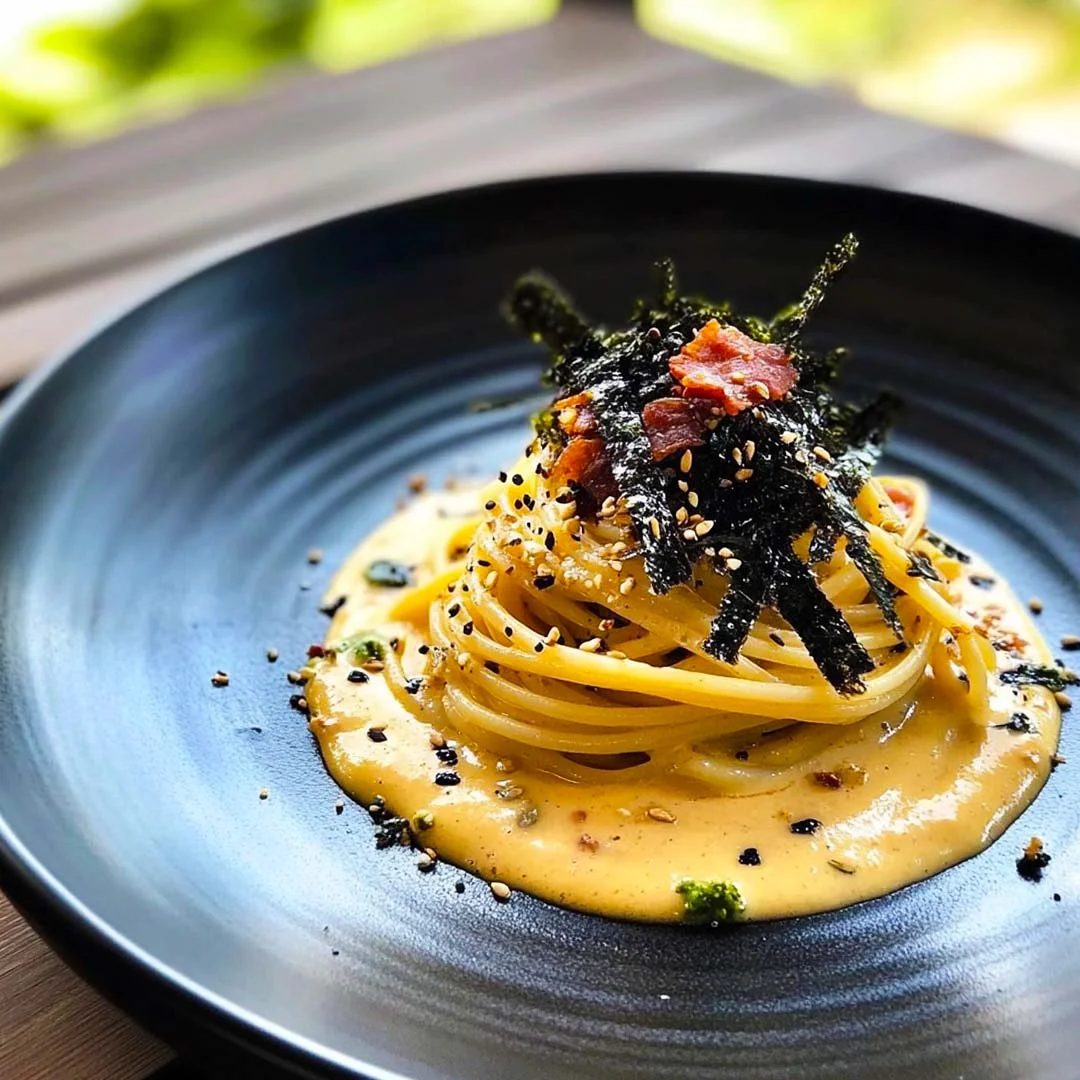
Under the Sea(weed)
In Mumbai’s dynamic culinary scene, where tradition meets innovation, seaweed is making waves as a surprising new star. A pioneering company is introducing this oceanic treasure into some of India’s top kitchens, including the celebrated Masque, aiming to elevate seaweed from sushi roll filler to fine dining essential.
Chefs are using seaweed in an array of dishes: umami-packed broths, vibrant salads, and even as a topping for modern reimaginings of traditional snacks like khakra. At Masque, for instance, a delicate seaweed consommé pairs perfectly with locally sourced seafood, while other venues experiment with seaweed-infused flatbreads or crispy tempura garnishes.
Seaweed’s appeal goes beyond being just culinary, it’s also a nutritional powerhouse. Packed with iodine, magnesium, and antioxidants, it’s a natural choice for health-conscious diners. The ingredient also aligns with growing demands for sustainable dining, as seaweed cultivation requires no fresh water or fertilisers and helps absorb carbon dioxide.
As chefs push the boundaries of Indian cuisine, seaweed is fast becoming a symbol of the evolving food culture, blending global influence with local ingenuity.

Swiped Away
If the movies and shows we watch are any indication, love is apparently just one trip away. And it seems many are embracing that fantasy, even as they use dating apps. With Tinder’s ‘passport feature’, you can swipe across locations far beyond your immediate surroundings. Turns out, many are doing just that in the quest to find love.
According to a recent report, many are expanding their romantic horizons by connecting with potential matches overseas. The most popular countries include Mexico, Canada, Colombia, the Philippines, Japan, France, and Spain.
While the idea of finding love abroad is tempting, statistics reveal that only one in 57 Tinder matches leads to an in-person meet-up, and the numbers fall significantly when international travel is involved.
This shift in dating behaviour, however, highlights a larger trend — people are becoming more intentional about romance, actively seeking connections that align with their goals, no matter where in the world those connections may be. What do you think?

Heart Stoppers
What began as a niche genre in 1970s Japan has blossomed into a global cultural phenomenon: Boys’ Love (BL) literature. Centred on romantic relationships between male characters, BL first gained traction through shōjo manga targeted at young women. By exploring non-heteronormative relationships, these early works broke societal norms and sparked a wave of storytelling that blended fantasy with emotional depth.
Today, BL transcends its Japanese roots, thriving in countries like Thailand, South Korea, and beyond. Thai BL dramas, such as 2gether and KinnPorsche, have amassed devoted international fandoms, showcasing Asia’s storytelling prowess and sparking deeper discussions about LGBTQIA+ representation in mainstream media.
The genre’s universal appeal lies in its exploration of themes like love, identity, and acceptance, while providing a safe space to navigate the fluidity of relationships. For many fans, BL serves as both escapism and a platform to question societal norms around gender and romance.
While some critics highlight its reliance on certain tropes or idealised portrayals, BL’s impact is undeniable. It challenges stereotypes, fosters cross-cultural connections, and redefines modern storytelling. In spaces where such conversations are often overlooked, Boys’ Love is like a silent movement celebrating the many ways love is expressed.
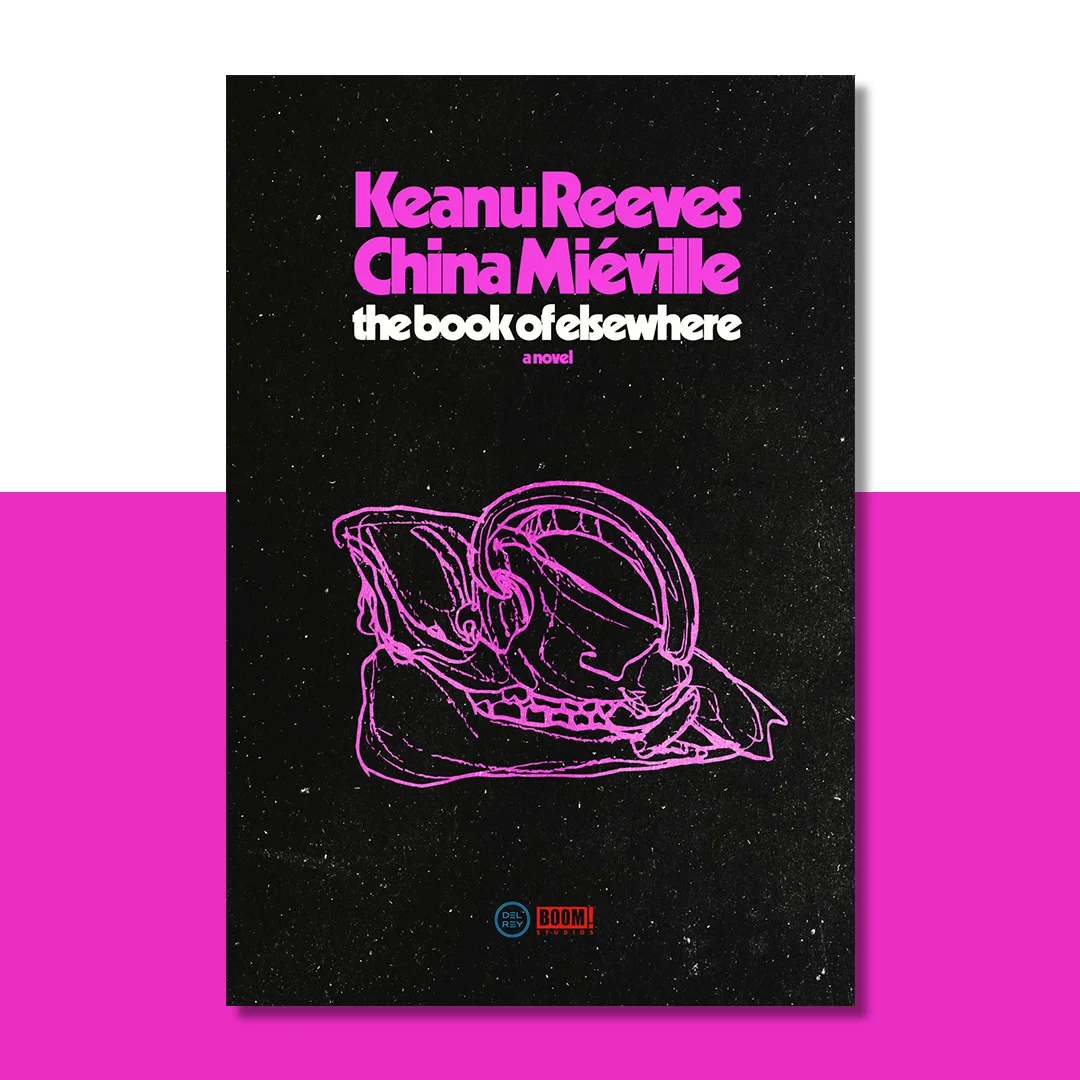
A Wondering Warrior
Usually when we see a book that is associated with a non-literary celebrity, we tend to dismiss it as a quick cash grab. However, that is not the case with The Book of Elsewhere, which has emerged from a collaboration between two A-listers in their own milieu.
In 2021, Keanu Reeves, in collaboration with Boom! Studios, released a twelve part comic book series titled BRZRKR. Following a warrior who goes by the name Berzerker, or B, the series covered disparate time periods as the protagonist made his way through time, fighting different battles and different enemies.
After the initial series had been met with acclaim, speculative fiction author China Mieville, who was also a fan of the series, was roped in to write a book with the actor. The result is The Book of Elsewhere, which continues the story of B, but this time, it has a little philosophical bent to it. Since B is immortal, the book delves deep into his mind and what he thinks about life. Having lived through millennia, he is looking for a release. But he won’t get it just yet, as he still has to learn much about the living to be truly dying.
People who have read Mieville’s prose will find his attention to detail and signature writing style present. What Reeves provides the narrative is also rather interesting, as it creates a certain space for imagining by the reader, rather than Mieville’s descriptions doing the job. And when it comes to something philosophically heavy, a slight sparseness is always welcome.

Low For Slow
In an age of instant gratification and on-demand entertainment, a surprising genre has quietly captivated viewers: Norwegian Slow TV. Imagine hours of uninterrupted footage of a train gliding through snowy landscapes or the hypnotic rhythm of knitting needles clicking away. It might sound improbable, but this meditative form of television has found a devoted global audience.
Pioneered by Norway’s national broadcaster, NRK, Slow TV rejects the fast-paced nature of programming, instead revelling in the beauty of the mundane. Its breakout success, Hurtigruten: Minute by Minute, gave people a 134-hour live broadcast of a ferry journey along Norway’s rugged coastline. The programme captured not just the voyage but also the changing weather, serene fjords, and onboard routines.
Other highlights include Bergensbanen: Minute by Minute, a seven-hour train journey from Bergen to Oslo, and National Knitting Night, which followed a world-record attempt to produce a sweater from sheep to finish in a single night. Then there’s Salmon Fishing, where the steady rhythm of anglers patiently casting their lines proves unexpectedly captivating.
Far from being monotonous, Slow TV elevates the ordinary, turning simple moments into a calming escape. It gently invites you to slow down, savoring the small, often overlooked details of the present moment. And what could be better than that?
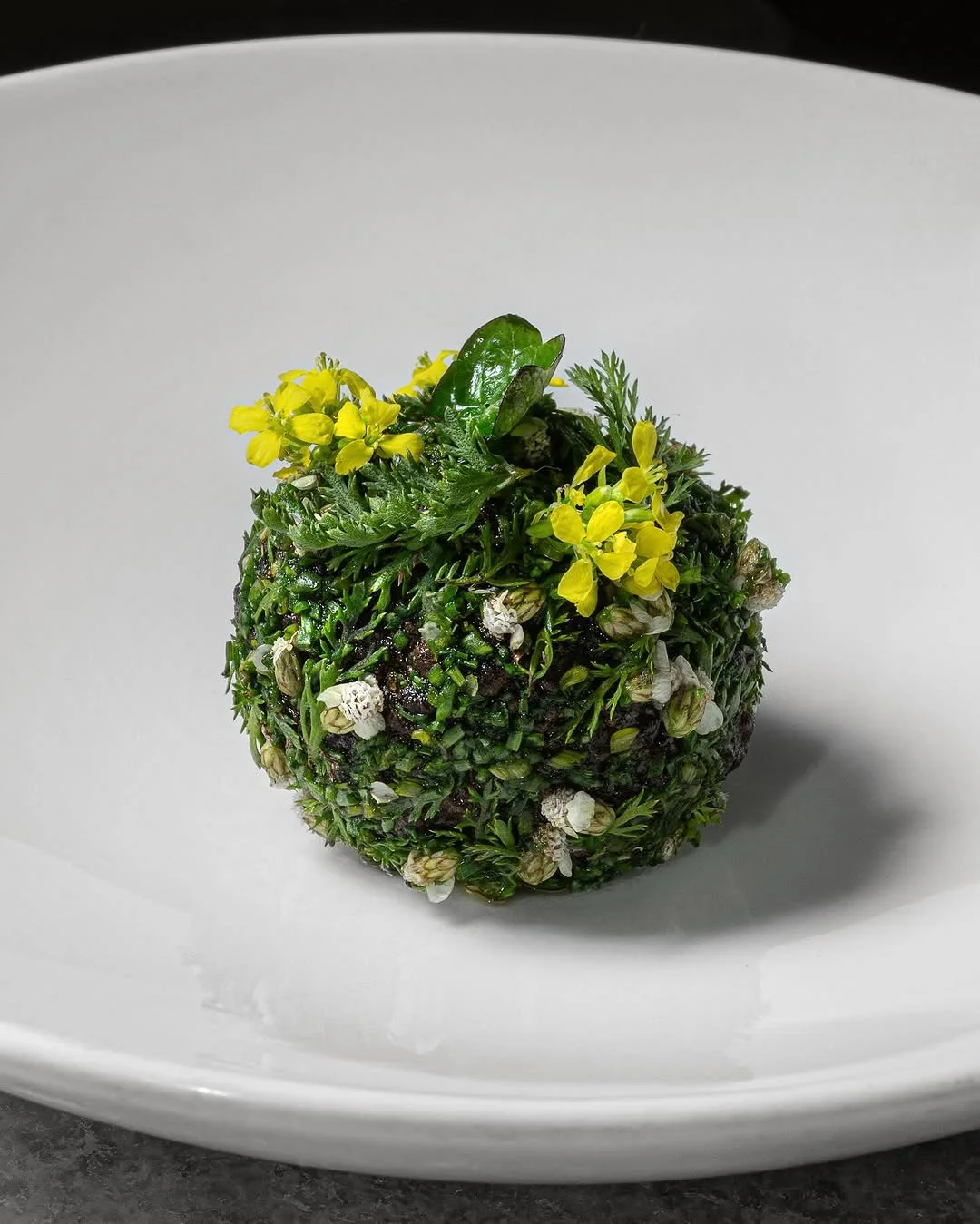
Food(ies) For Thought
Have you ever dined at a place so eco-friendly it doesn’t even have a bin? Welcome to Silo in Hackney, East London, where the future of dining meets zero waste. Founded by chef Douglas McMaster, Silo boldly claims the title of the world’s first zero-waste restaurant, proving that reducing food and environmental waste can be as innovative as it is delicious.
At Silo, food scraps find a second life. Vegetable peelings transform into treacle, and bread offcuts become ice cream sandwiches. The ethos extends beyond the plate, with sustainable furniture, reusable delivery containers, and projected menus that eliminate paper waste. It’s a space where every detail is a celebration of resourcefulness.
Silo isn’t just about food; it’s part of a larger movement challenging the restaurant industry to rethink waste. Its approach inspires chefs, diners, and policymakers alike, showing that sustainability and creativity can coexist.
The experience is as thought-provoking as it is satisfying. Imagine sitting in a minimalist, earthy space, savouring dishes that embody the art of culinary recycling. It’s more than a meal — it’s a glimpse of what dining could, and should, become.

Bamboo Renaissance
Bamboo is experiencing a resurgence in modern design and construction, celebrated for its sustainability and versatility. Known for its rapid growth and eco-friendly attributes, bamboo is not only a renewable resource, but also a material with deep cultural and historical significance across Asia. Its usage in architecture dates back centuries, particularly in countries like China and Japan, where it has been integral in building structures, from homes to scaffolding.
Architects like Ewe Jin Low, who has worked extensively with bamboo, are helping to shift the paradigm in construction, advocating for bamboo to replace more conventional materials like steel and concrete. Low’s journey, which took him from mainstream architecture across the world to a bamboo-focused practice in Bali, highlights how bamboo is not only practical but also deeply rooted in tradition. The organic, flexible nature of bamboo allows for innovative, sinuous designs that elicit awe from those who experience them.
Culturally, bamboo has held profound symbolism in many Asian societies. In Chinese culture, bamboo is a symbol of virtue and integrity, while in Japan, it embodies simplicity and inner peace. In India, bamboo plays a role in sacred rituals, symbolising prosperity and fertility.
As global awareness around sustainable materials grows, bamboo’s flexible, lightweight properties make it an attractive alternative for both architecture and product design, paving the way for eco-conscious solutions in construction and beyond.

Chill Theory
Picture this: you’re sprawled on the couch with your closest friend, phones in hand but barely scrolling, the conversation meandering between silence and bursts of laughter. There’s no agenda, no plans, just the quiet ease of being in each other’s company. It’s a moment so unremarkable that you might not even register its importance — but science says otherwise.
Spending time with loved ones without the pressure of “doing something” is increasingly recognised as vital for mental well-being. These moments of shared idleness strengthen bonds, offering a space where vulnerability and connection thrive. Free from distractions, we’re able to let down our guard, share unfiltered thoughts, and simply be.
Psychologists highlight numerous benefits to this downtime, from reducing stress to fostering a deeper sense of belonging. As modern life pushes us to optimise every second, the quiet magic of doing nothing with someone we trust becomes a small act of rebellion — and a profound reminder of what really matters.
So, the next time you’re tempted to cancel a plan that’s just “hanging out,” maybe reconsider. It might just be the most restorative thing you’ll do all week.
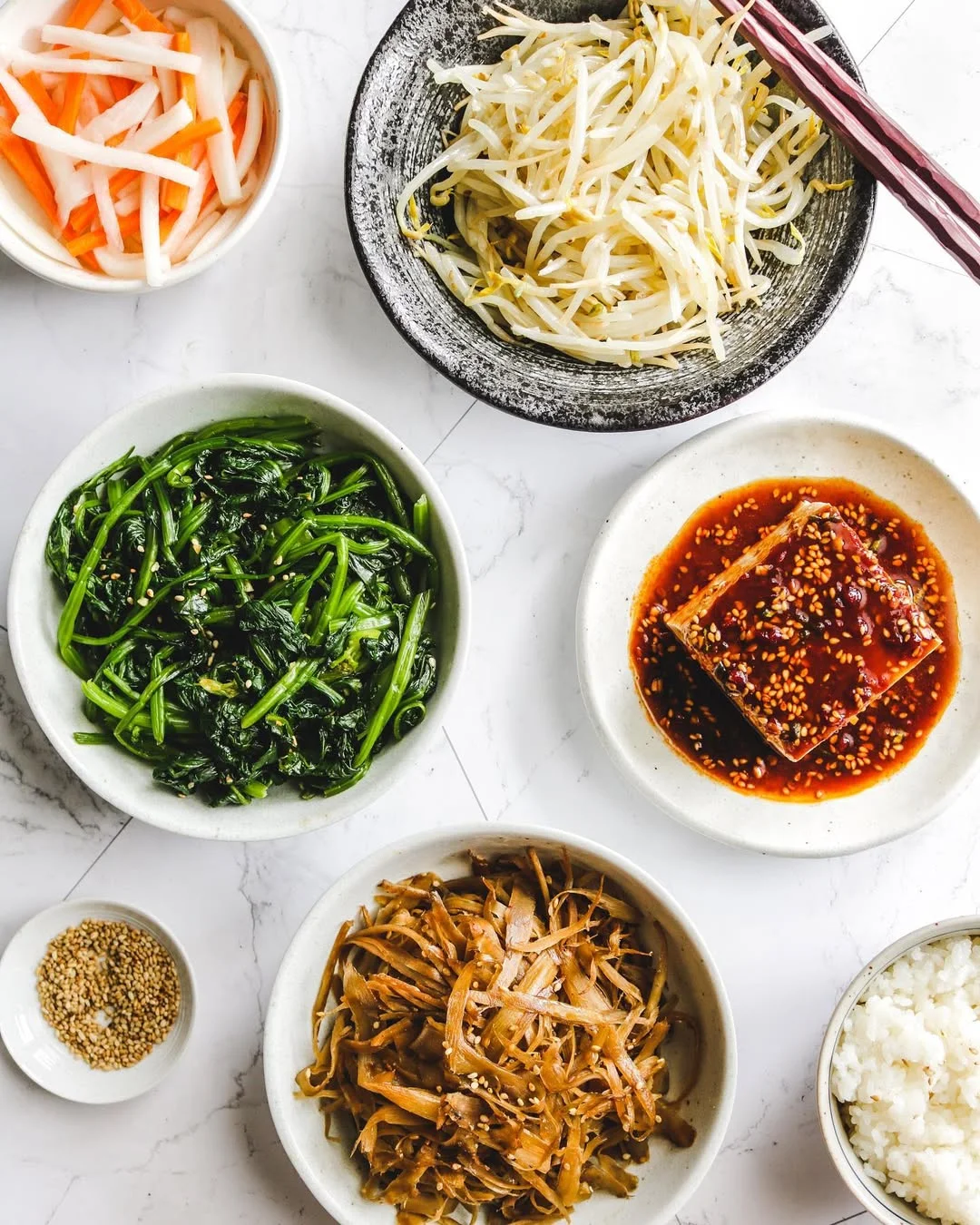
Banchan Bliss
At a Korean table, it’s not the main dish that takes the spotlight — it’s banchan, a collection of small side dishes that invite sharing and spark conversation. Rooted in Korea’s rich history, banchan first emerged during the Joseon Dynasty, evolving from a practical way to preserve food during long winters to a symbol of hospitality.
Banchan encompasses a variety of flavours and textures, from the spicy, fermented tang of kimchi to the subtle, earthy notes of namul (seasoned vegetables). These dishes are a celebration of balance and harmony, using seasonal ingredients to reflect Korea’s deep connection to nature. Whether it’s spring greens, summer vegetables, or winter preserves, the bounty of the seasons is on display in every bite.
Beyond their taste, banchan also has a wealth of health benefits, with many dishes rich in probiotics, antioxidants, and nutrients that naturally support gut health. But more than just nourishment, banchan serves as a reminder of Korea’s communal dining culture — where food is meant to be shared, enjoyed, and celebrated together, reinforcing bonds and creating moments of connection.

Pup-centric Spaces
Dogs have an uncanny ability to make themselves at home — whether it’s on your designer sofa or smack in the middle of your bed. But what if their spaces were as thoughtfully designed as yours? That’s the premise behind Architecture for Dogs, a project where top-tier architects channel their creativity into crafting innovative spaces for our canine companions.
Take Kengo Kuma’s design for Pugs, for example. It’s a minimalist ‘mountain’ structure made by interlocking plywood pieces. This is a multifunctional haven that caters to a Pug’s love for burrowing and climbing. Lightweight yet sturdy, it offers both a cozy hideout and an engaging play area.
Meanwhile, Konstantin Grcic’s creation for Toy Poodles is a playful take on mirrors. Designed to appeal to the breed’s intelligence and curiosity, it reflects their movements, creating an endlessly entertaining experience. It’s part art installation, part interactive playground.
What makes these designs remarkable is their attention to detail. Each piece is tailored to specific breeds, addressing their instincts and behaviors while blending seamlessly into human-centric spaces. These doghouses are architectural statements, redefining how we think about pet spaces.
It’s a fascinating intersection of form, function, and fun. By considering dogs as active participants in design, Architecture for Dogs elevates their living spaces.